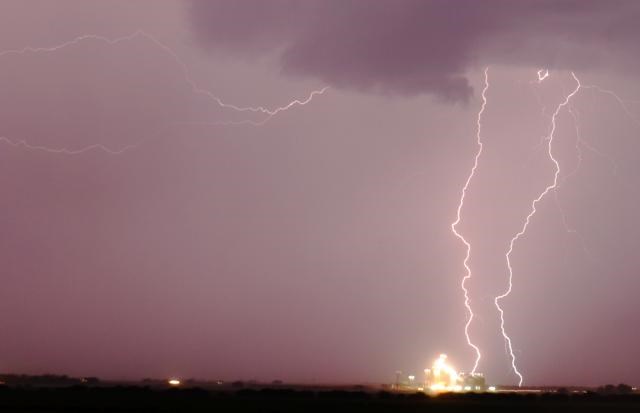(A thunderstorm packing strong winds swept through the Weyburn area on Sunday evening, but didn't bring much rain)
Crops in southeast Saskatchewan advanced quickly due to the hot temperatures and a low amount of moisture.
Although fields in the southeast are in better shape than other areas of the province, the recent heat wave will cause damage to many crops.
Canola crops are in the flowering stage right now and were damaged by the heat, with yield potential and quality likely to be impacted. Stress caused by a lack of moisture is also showing up in cereal and pulse crops, with some stands prematurely drying down.
For Weyburn area farmer Dale Mainil, their crops are doing fairly well but are definitely in need of more rainfall soon.
“All things considering, the crop is holding up still. We definitely need more rain, but we are better off than west of us,” he said, noting that in the past week, his crops received half an inch on the land north of Weyburn, and eight-tenths of an inch on land south of the city.
“It’s already gone. It would ne nice to get an inch or so in the next week,” he said.
From the thunderstorm on Sunday evening, his land received only about a tenth of an inch, and he had some bins damaged by the wind.
Asked about the effects of the heat, Mainil said, “Thank goodness it cooled down for four or five days last week. Canola is in its flowering stage right, and it will definitely affect the yield.”
Looking at crop development in the southeast as of the first week of July, fall cereal crops are 67 per cent heading and 30 per cent in the dough stage; spring cereals are 11 per cent at the jointed stage, 40 per cent shotblade, and 44 per cent heading.
Flax crops are 56 per cent in the stem extension stage, and 37 per cent is flowering, while canola and mustard crops are 33 per cent in the rosette stage, and 62 per cent flowering, and pulse crops are 32 per cent in the vegetative stage, 22 per cent flowering and 46 per cent podding.
Prior to the weekend, rainfall amounts in the region ranged from nil to seven millimetres in the Radville area, five mm in the Stoughton area and four mm in the RM of Weyburn area.
Topsoil moisture conditions have slightly deteriorated with the recent heat. Cropland topsoil moisture is rated as 37 per cent adequate, 52 per cent short and 11 per cent very short.
Hay and pasture land topsoil moisture is rated as 23 per cent adequate, 58 per cent short and 20 per cent very short.
Haying is well underway in the region, with 19 per cent of the hay crop cut and seven per cent baled or put into silage. Hay quality is rated as four per cent excellent, 64 per cent good and 32 per cent fair.
While some producers are expecting about an average hay crop, yields will be significantly less in drier areas.
Pastures in the region are drying up and will have reduced carrying capacity if rain is not received soon. Pasture conditions are currently rated as 17 per cent good, 51 per cent fair, 29 per cent poor and three per cent very poor. Some producers are hauling water to livestock in pastures as sloughs and dugouts are quickly drying up.
Crop damage this past week is attributed to a lack of moisture, strong winds, gophers and insects such as grasshoppers. Some producers have been spraying pulse crops and hay stands for grasshoppers.
Farmers are also applying fungicides if warranted, haying, scouting crops, fixing equipment and hoping for rain.



